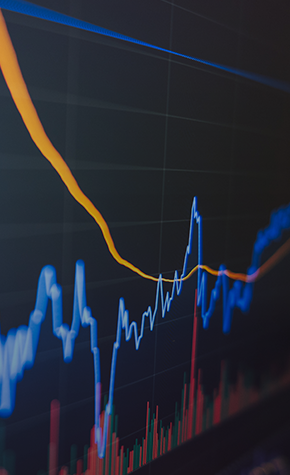Contrary to the blaring headlines and grim prognosticators, not every business was caught unprepared when the Suez Canal was blocked for days nor even by the global pandemic. It is now possible to apply hard data to answer a much large number of predictive questions than could be managed in even the very recent past. With such a model, the implications of a supply chain disruption can be managed using a sophisticated and possibly automated response to avoid a crisis.
But as recent events have shown, many companies struggle to convert data into action. The challenge is bigger than an analyst, or even a team of analysts, can answer with a few queries.
The simple fact is that supply chains have become exceedingly complex and vulnerable to disruption at the same time, as buying patterns and disintermediation have changed the rules of the demand side. This puts a business’s supply chain at maximum risk at the same time as it is working hardest to remain competitive and aligned with demand. Adding to that, pressure is increasing as customers expect to understand details regarding provenance, sustainability and ethical practices across the entire supply chain.
Balancing Resilience and Cost
Getting started toward protecting your supply chains begins by asking the right questions: Which of our supply chains are susceptible to disruption and therefore in need of active monitoring to mitigate risk? Is our organization fully aware of potential changes in demand and buying patterns and has it meaningfully responded to those factors? Does our organization have a native capability to interpret those risks and a plan with options that provide the needed resiliency? These are deceptively simple questions, in some regards, but ones whose answers are elusive for many organizations.
Effectively mitigating supply chain risk is a balancing act. You could build the most resilient supply chain, perhaps stocking warehouses full of reserves, but the compound costs can easily mean your products become too costly to be competitive. To solve this problem you need to become sensitized to the interplay between your competitive position and the impact various forms of risk might present. Supply chains need to be managed in a strategic way that balances the cost of building resilience with ongoing insights into competitive pressures and changing customer demand.
Creating a Supply Chain Control Tower With a Microscope
The solution is to increase your awareness of the supply chain and its real importance. Your organization needs the ability to poke and prod the data that describes your supply chain to identify and prioritize vulnerabilities and address the important ones that maintain your company’s competitive edge. When major disruptions occur, such as the blocking of the Suez Canal, every company is going to respond in some way. It’s the company that responds quickest and most precisely that will come out ahead. Interestingly, this doesn’t require being the best at every aspect of the supply chain — just the specific ones that will give the edge in your industry. Being able to isolate the best tradeoff between mitigating action and your organization’s ability to remain resilient and agile is critical.
To build resilience and competitiveness within your company, your organization needs information — insights derived from data about everything from your supplier’s supplier to your customer’s customer. These are data and insights that are not readily available using only the resources within the closed ecosystem of your business’s own enterprise resource planning (ERP) systems. A control tower solution like the one offered by Hitachi offers customized visibility and integration of data from the far ends of the consumer side to the deepest depths of the supplier side. This type of solution makes it possible to evaluate and monitor at-risk supply chains. The objective is not only to create a borderless perspective of the end-to-end supply chain, but also to implement autonomous monitoring, real-time analytics and insight-backed decision support that can ultimately enable autonomous prescriptive action.
The control tower sits on a virtual tier above systems like ERP, procurement, and advanced planning and optimization (APO). This positioning stretches the organization’s visibility to the distant reaches of the supply chain and integrates with systems at key nodes along the supply chain. If a purchase order at a supplier’s supplier isn’t being fulfilled on time, that’s information vital to your own supply chain. Access and integration of such data from numerous sources make it possible to get insights that are otherwise invisible in a timely manner.
This is a complex, data-driven solution. It requires a technology partner with knowledge not only of the business applications in use, but also the analytics, AI and machine learning (ML) capabilities. It is these capabilities that make it possible to automate the conversion of knowledge into actionable insights, to optimize and mitigate risk within the supply chain. It leverages the connectivity and data-sharing made possible by APIs, distributed data infrastructure and IoT sensors. But just as important is the increasing motivation to share data as companies seek to prove that they’re reliable, deserving partners.
Automating the Response to Disruptions
It is now possible to build a wide and deep supply model that makes the most of advanced analytics, AI and ML, to automate proactive response. So, for example, if the system detects a risk early on a particular route because it’s monitoring the trucks and consignments, it can suggest an alternative route: It can advise the relevant logistics team that inventory is at risk and propose alternative options for the stocking position or product portfolio. The company is in a position to implement alternatives before small challenges become major problems.
The permutations and possibilities are endless. For example, Hitachi Vantara is working with Horticulture Innovation Australia, Australian Horticulture Research, and a number of horticulture-industry peak bodies. These groups are collaborating with farms in the Great Barrier Reef catchment area to enable more sustainable, environmentally friendly operations that will help protect this famous World Heritage Site. The control tower for this operation monitors irrigation, rainfall, fertilization and runoff, and production, as well as tracking produce and its quality as goods head to market. Automated, rules-based systems have been trained to look for anomalies at a scale that would be beyond the scope of analysts to track. Monitoring this massive and intricately intertwined supply chain helps achieve and maintain the balance the organization seeks.
Of course, the best monitoring and insights cannot help if a company has not taken steps to enhance the resiliency of its supply chains. That’s why, alongside improved systems, one of the best steps a company can take is to set aside a small specialist team with responsibility for modeling alternatives and keeping business management apprised of how such “Plan B” options will be put into action. When these efforts are combined with effective monitoring of extensive data that tracks and traces activity across the supply chain, as well as automated decision-making tools, it becomes possible to take mitigating action before problems become damaging.
If you’re ready to build a resilient and data-driven supply chain, you don’t want to miss my fast-approaching Industry Week-hosted webinar, A Resilient Approach to Supply Chain Management on May 13th. Register now and hear Yossi Sheffi, MIT professor and author of award winning book “The New (Ab)Normal: Reshaping Business and Supply Chain Strategy Beyond Covid-19,” as we share our insights around strategic supply chain management and the importance of balancing operational workflows with production lines to offset evolving customer demands and potential disruptions.
Additionally, for a more strategic view of our digital solutions that optimize supply chain management and their corresponding use benefits, such as end-to-end visibility and intelligence monitoring, be sure to attend the Hitachi Social Innovation Forum business session, Control Tower, Come In: Manage Your Supply Chain in an Ever-Changing Market, on May 25th. I will be leading this pragmatic discussion alongside Horticulture Innovation Australia to explore risks and share insights as a strategic imperative for industrial businesses. Register here.
Owen Keates is Industry Executive, Manufacturing Practice at Hitachi Vantara.


























































































